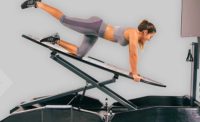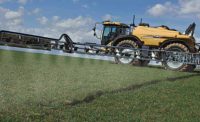A few years ago, Brian Gattman, senior mechanical engineer at Fluke Corp., faced a big problem when designing the company’s new handheld TI400 thermal imaging camera. The off-the-shelf bearings he wanted to use in it were too big and had a too-high coefficient of friction. By working closely with the supplier, however, he was able to have the bearings custom made to meet both design specifications.
Gattman had planned to use standard 0.125-inch-diameter linear ball bushing bearings from Thomson Industries Inc. because they are made of stainless steel and corrosion-resistant polymer. He soon learned, however, that the smallest standard size is 0.125 inch, or 3.175 millimeters, in diameter, which was just a little large. The specifications required a 3-millimeter-diameter bearing be used.
Gattman also found out that the off-the-shelf bearings had a too-high coefficient of friction. He then explained to Thomson’s engineers why the camera needed low-friction bearings. First, they would allow for fast and accurate focusing of the camera’s moveable internal lens. Equally important, the bearings would enable Fluke engineers to design the camera to operate with a small motor that produces only 300 millinewtons of force and consumes limited power to optimize battery life.
Within a short time, Thomson engineers retooled their equipment and produced custom bearings that met both of Fluke’s design specifications. Engineers from both companies then worked together to develop a proprietary grease for the bearing housings.
Injected on the assembly line using a special jig, the grease ensures optimum performance regardless of external ambient (-20 to 50 C) or internal operating (50 to 75 C) temperature. Double-lip integral wipers on the bearings help secure lubrication while keeping out dirt. Finished bearing plates further enhance smooth operation and extend wear life.
The TI400 camera is designed for indoor or outdoor use by professional thermographers and maintenance managers. It features a LaserSharp autofocus system that consistently produces in-focus images.
A red laser is beamed onto the target to calculate its distance from the camera. This information is sent to the camera’s focus mechanism, which precisely positions the movable lens to create an image preview on a 3.5-inch-high touchscreen. The operator squeezes the camera trigger to capture this image.
For more information on linear ball bushing bearings, call 540-633-3549 or visit www.thomsonlinear.com.






